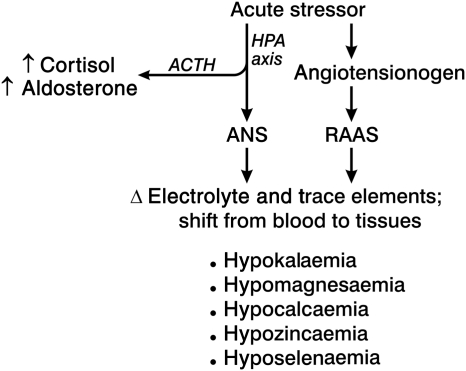Figure 3.
An acute stressor state, such as bodily injury, activates the hypothalamic–pituitary–adrenal axis with resultant release of adrenocorticotropin hormone, which promotes the adrenals’ release of cortisol and aldosterone, and catecholamines from the adrenal medulla. The acute phase reactant, angiotensinogen, is released by the liver during stressor states and is accompanied by activation of the renin–angiotensin–aldosterone system . In turn, elevated plasma catecholamines, norepinephrine, and epinephrine, promote a coordinated cation translocation from the vascular space to tissue compartment accounting for a concordant fall in their serum concentrations and presenting as hypokalaemia, ionized hypocalcaemia and hypomagnesaemia, hypozincaemia and hyposelenaemia.

